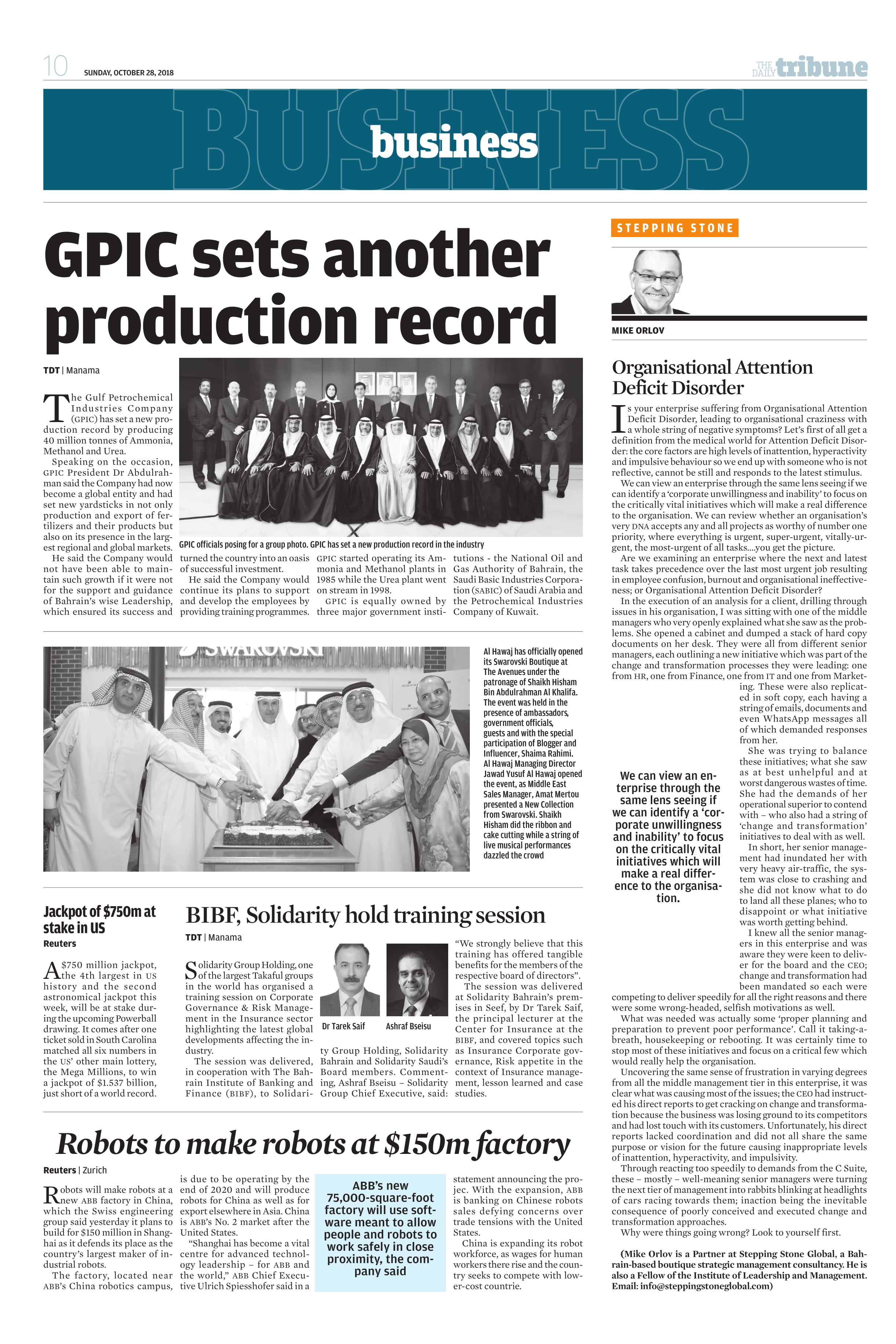Organisational Attention Deficit Disorder
Is your enterprise suffering from Organisational Attention Deficit Disorder, leading to organisational craziness with a whole string of negative symptoms? Let’s first of all get a definition from the medical world for Attention Deficit Disorder: the core factors are high levels of inattention, hyperactivity and impulsive behaviour so we end up with someone who is not reflective, cannot be still and responds to the latest stimulus.
We can view an enterprise through the same lens seeing if we can identify a ‘corporate unwillingness and inability’ to focus on the critically vital initiatives which will make a real difference to the organisation. We can review whether an organisation’s very DNA accepts any and all projects as worthy of number one priority, where everything is urgent, super-urgent, vitally-urgent, the most-urgent of all tasks….you get the picture.
Are we examining an enterprise where the next and latest task takes precedence over the last most urgent job resulting in employee confusion, burnout and organisational ineffectiveness; or Organisational Attention Deficit Disorder?
In the execution of an analysis for a client, drilling through issues in his organisation, I was sitting with one of the middle managers who very openly explained what she saw as the problems. She opened a cabinet and dumped a stack of hard copy documents on her desk. They were all from different senior managers, each outlining a new initiative which was part of the change and transformation processes they were leading: one from HR, one from Finance, one from IT and one from Marketing. These were also replicated in soft copy, each having a string of emails, documents and even WhatsApp messages all of which demanded responses from her.
She was trying to balance these initiatives; what she saw as at best unhelpful and at worst dangerous wastes of time. She had the demands of her operational superior to contend with – who also had a string of ‘change and transformation’ initiatives to deal with as well.
In short, her senior management had inundated her with very heavy air-traffic, the system was close to crashing and she did not know what to do to land all these planes; who to disappoint or what initiative was worth getting behind.
I knew all the senior managers in this enterprise and was aware they were keen to deliver for the board and the CEO; change and transformation had been mandated so each were competing to deliver speedily for all the right reasons and there were some wrong-headed, selfish motivations as well.
What was needed was actually some ‘proper planning and preparation to prevent poor performance’. Call it taking-a-breath, housekeeping or rebooting. It was certainly time to stop most of these initiatives and focus on a critical few which would really help the organisation.
Uncovering the same sense of frustration in varying degrees from all the middle management tier in this enterprise, it was clear what was causing most of the issues; the CEO had instructed his direct reports to get cracking on change and transformation because the business was losing ground to its competitors and had lost touch with its customers. Unfortunately, his direct reports lacked coordination and did not all share the same purpose or vision for the future causing inappropriate levels of inattention, hyperactivity, and impulsivity.
Through reacting too speedily to demands from the C Suite, these – mostly – well-meaning senior managers were turning the next tier of management into rabbits blinking at headlights of cars racing towards them; inaction being the inevitable consequence of poorly conceived and executed change and transformation approaches.
Why were things going wrong? Look to yourself first.

